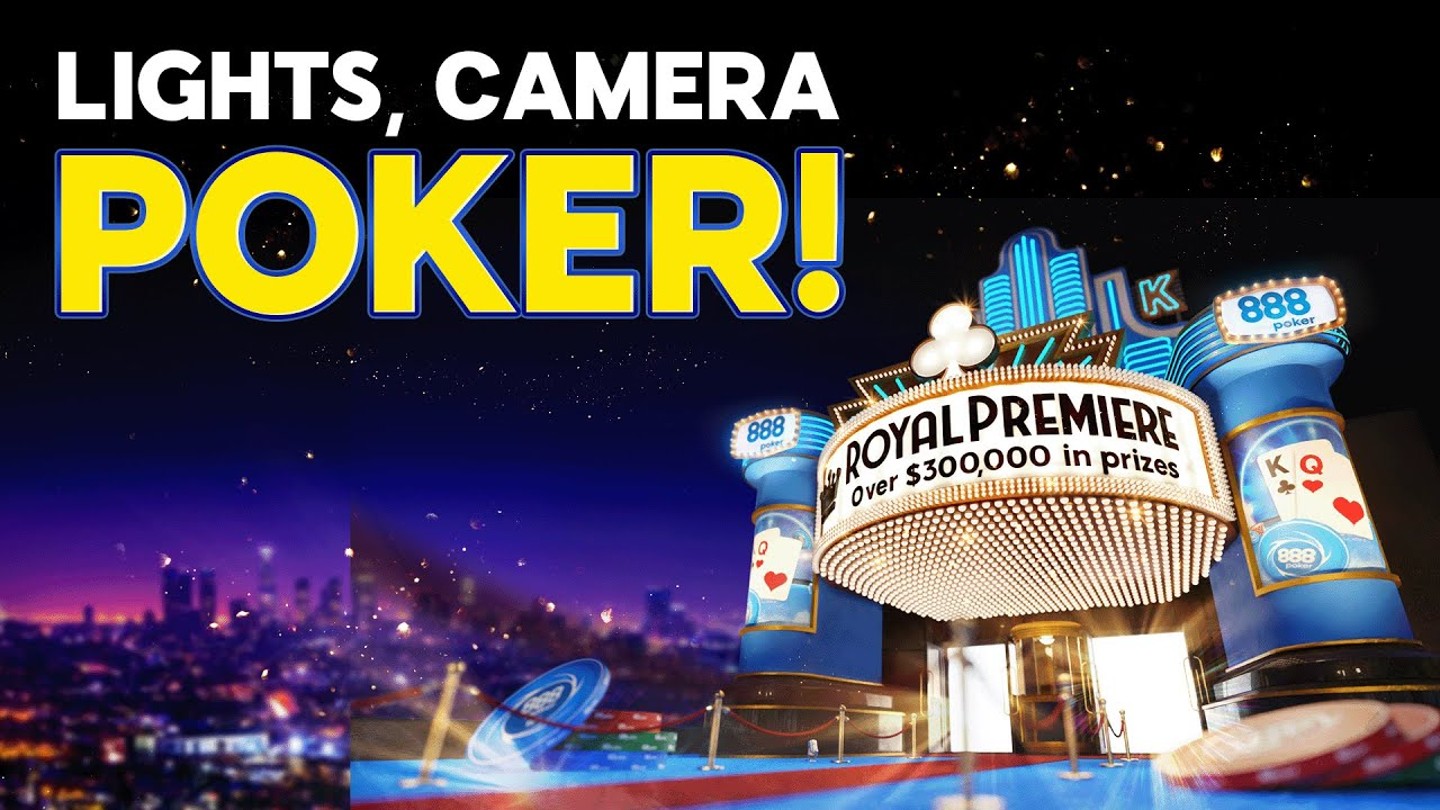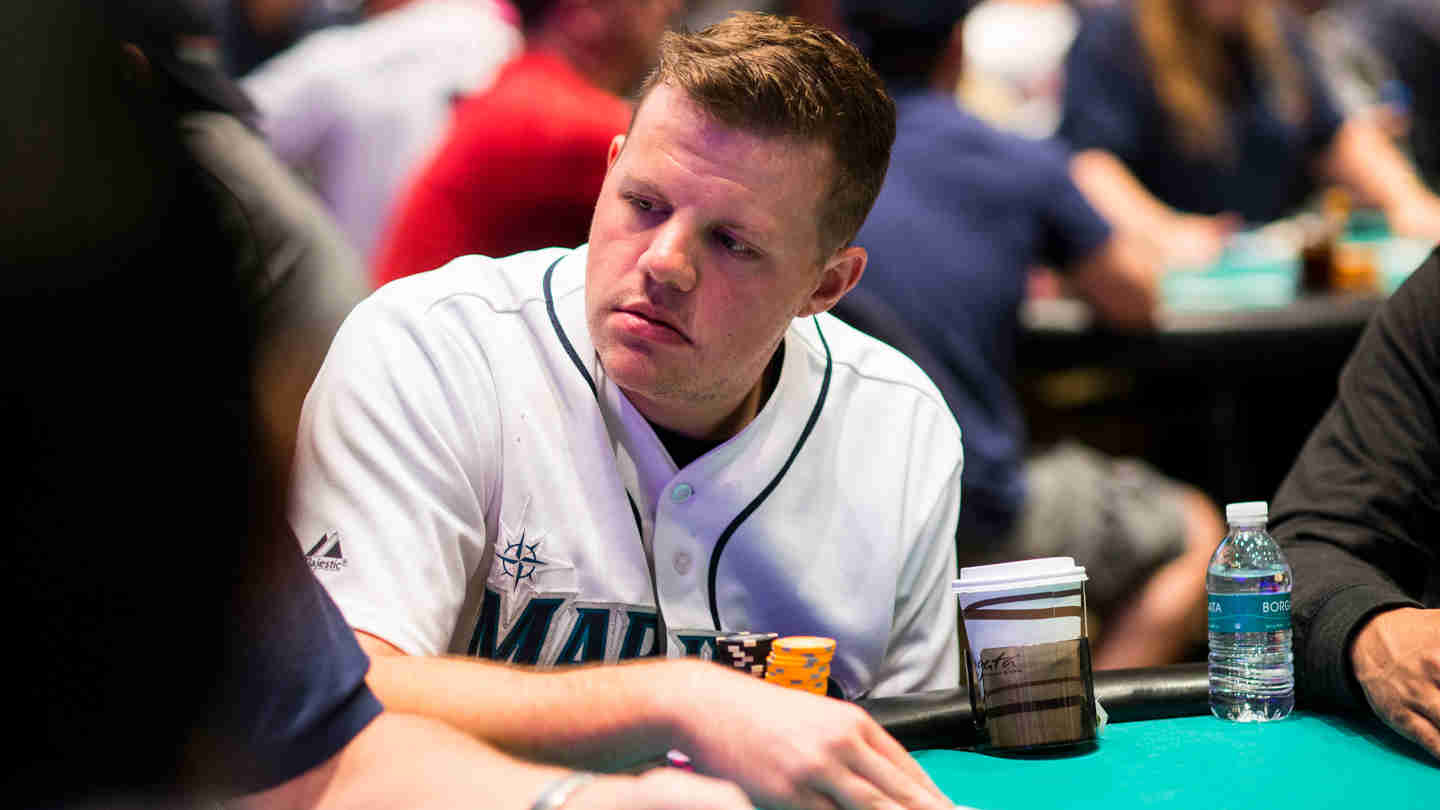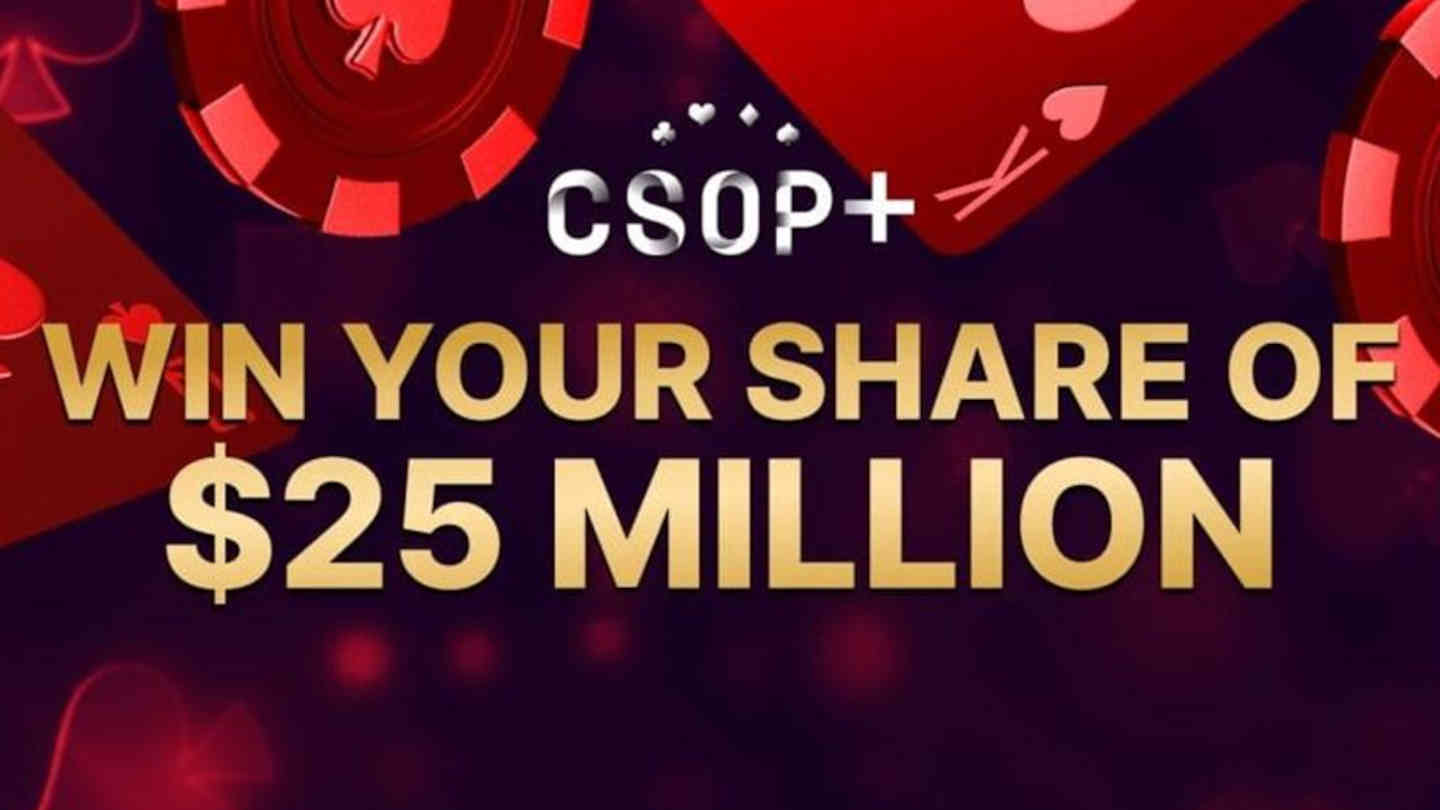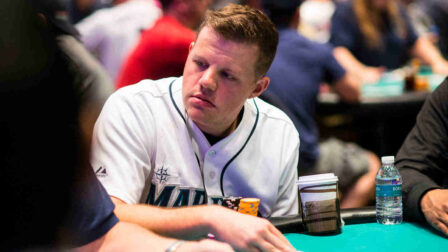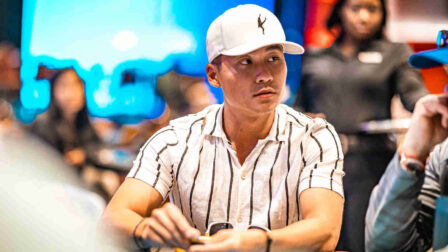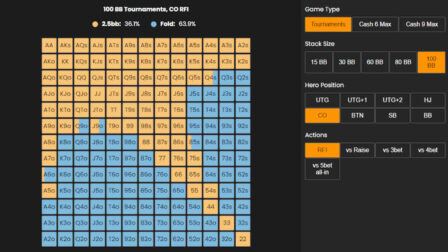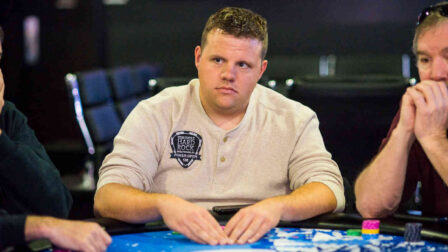Advanced Tournament Strategies: How to Improve Your Game
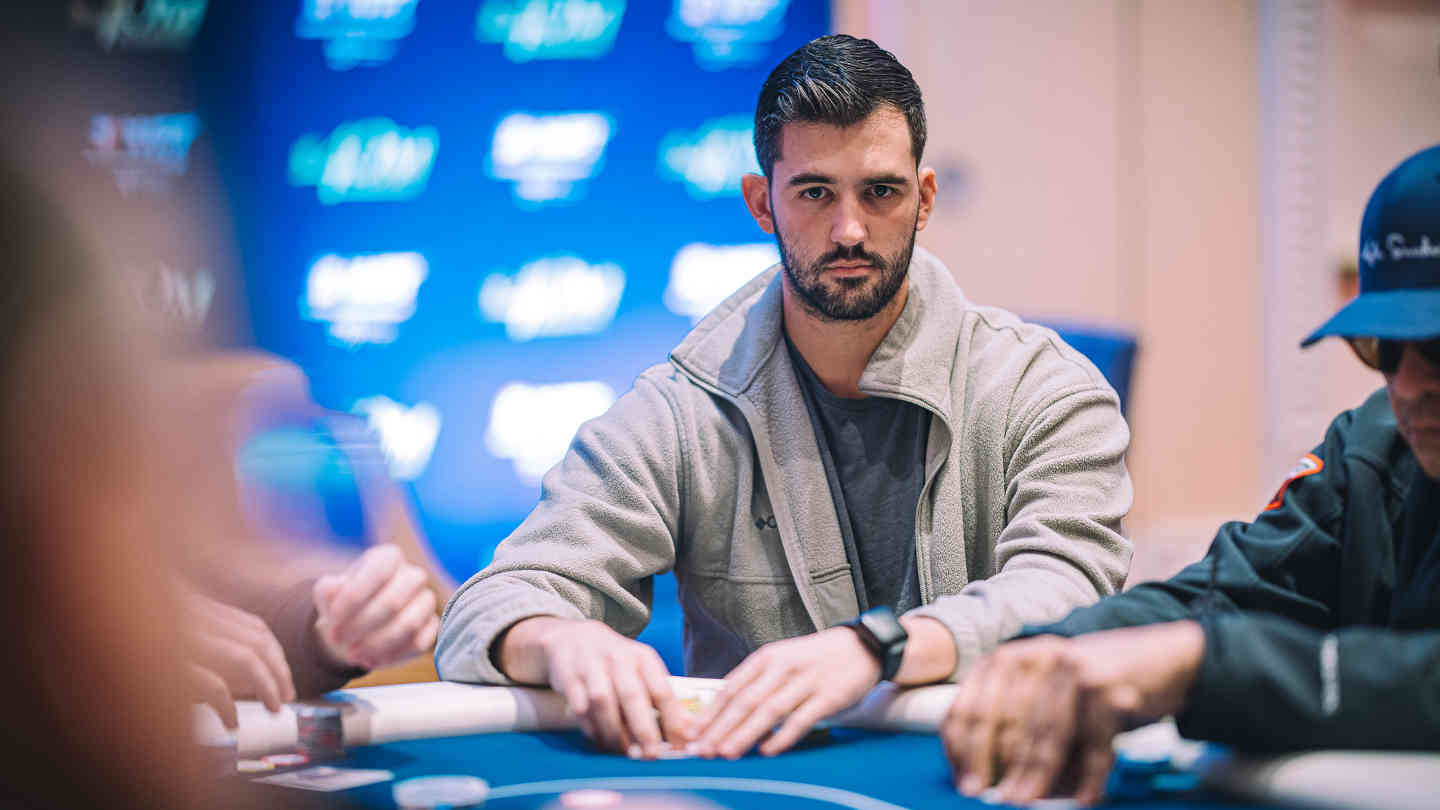
7 minutes
Last Updated: May 6, 2024
If you want to increase your edge at the tables even further, make sure to check the Pokercoaching training site.
…
This article will delve into advanced tournament strategies, giving you insights into various aspects of the decision-making process in high stakes games.
Of course, tournament strategy is a vast area, so it’s not something we can even begin to cover in a single article. This lesson is intend ended more as an introduction of sorts, to give you a basic understanding of how you should approach things if your goal is to improve in poker.
We’ll do this by looking at three interesting hands that I played myself, touching on some of the key GTO concepts that apply to many situations, not just these particular spots.
–
Playing OOP as Preflop Raiser
The first hand we’ll look into is from a $15,000 tournament, and it deals with a rather difficult spot of playing as a preflop aggressor out of position.
Starting with 30 big blinds, we make a standard 2x raise to 10,000 with K♠J♣ from the early position and get called by the button. The flop comes 8♦5♠2♠.
This is a much different situation than when we’re against a big blind defense. We can expect the button to have a pretty strong range here, as they won’t have any of the random hands that are present in the big blind range.
With all this in mind, equities will run much closer, and we’ll be doing much more checking. If we look at the solver, we’ll see that we have 51% equity in this spot, which is not a big advantage.
The strategy at 30 big blinds includes a lot of checking and a reasonable percentage of big bets. Looking at the picture, you can see that we’ll be doing a lot of betting with hands like 99 and TT, which require more protection, and more checking with hands like pocket aces and kings.
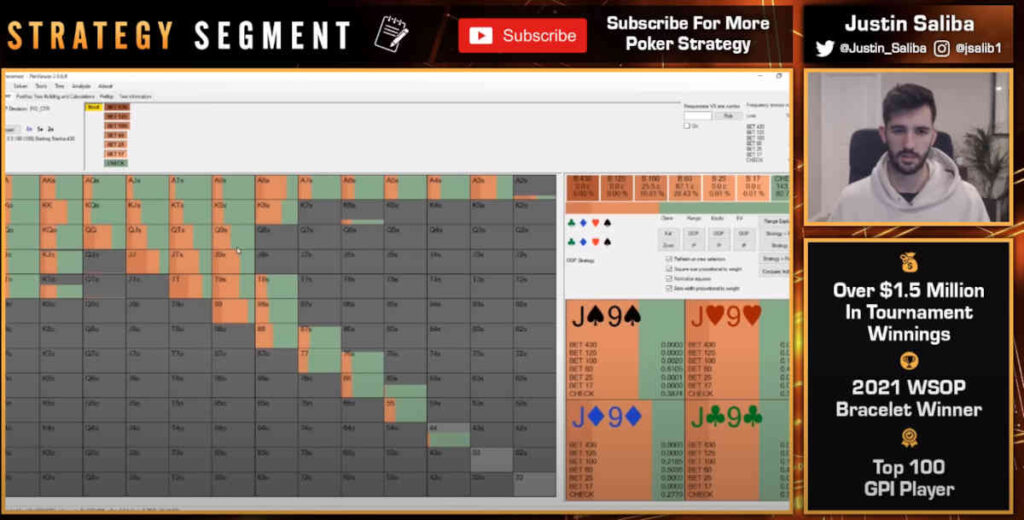
Because we’ll be doing big bets with nines and tens, we also want to match those hands to our bluffs, which is why solver suggest betting with hands like JTs and T9s.
In this particular hand, I ended up checking, and the opponent checked behind, and we saw the turn of 2♥.
Once the action checks through on the flop, this indicates that the opponent has a marginal range, as they’ll be betting their good eights and overpairs. Our equity doesn’t change at all from flop to turn, but we have a bigger nut advantage.
Thus, our strategy on the turn consists of a mix of checks and big bets (pot-sized and overbets), without any small or medium-sized bets.
So, with that in mind, I bet 90,000 in this spot, which is 150% of the pot, and the opponent calls, leading to the K♣ river.
The important question is, how good of a card is this for our range? We are bluffing with a lot of hands containing a king, while the opponent is pretty much never calling with a hand containing a king, especially given the fact we are holding the K♠.
With that in mind, we’ll be jamming a lot on this river and checking with our worst bluffing candidates. In this particular instance, I jammed, and he ended up calling with pocket sevens, which is fine according to the solver – his hand is pretty indifferent, so he can go either way on the river.
Using Multiple Flop Bet Sizes
The next hand I’ve picked for this lesson is from the same tournament, but it focuses on the concept of using multiple flop bet sizes.
We start the hand with around 45 big blinds and open to 2.5x from the cutoff with K♠9♦. The big blind calls, and we see the flop of J♥6♠5♦.
One thing to note immediately is that on these middling boards, we don’t have a huge advantage as a late position raiser. The big blind has more two-pair combos and connects reasonably well with the board. In this instance, I decided to bet a full pot (12k), and the opponent called.
If we check the solver, we see that this is the spot where we’ll be using a mix of big bets and really small, 25% bets.
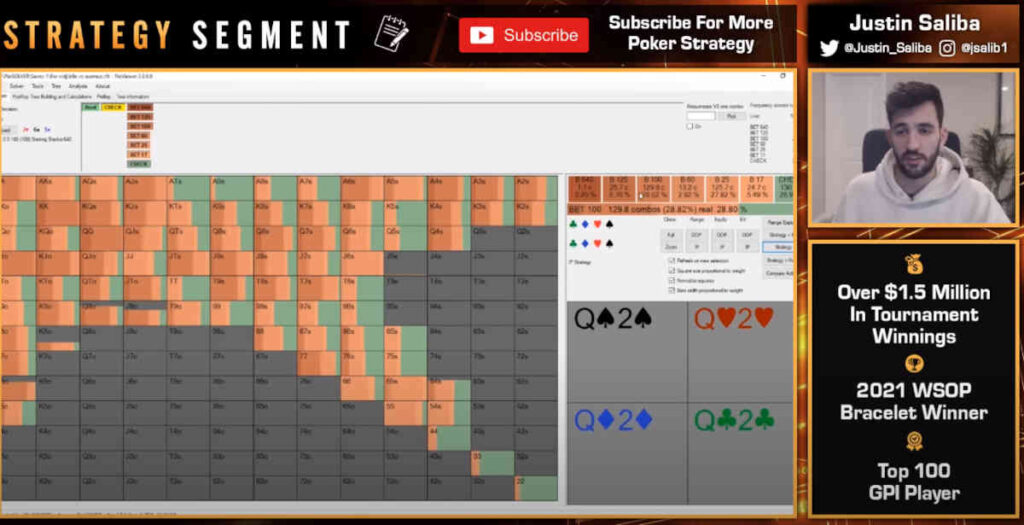
So, what hands want to be putting a lot of money into the pot on this flop? Pocket queens is one of the first hands that come to mind, as we won’t be able to barrel all turns and rivers with it. Then we have hands like AJ and KJ, so overpairs and top pairs are hands that we want to bet big with.
Then, there are hands like A6 and 77, which we can bet for protection, and we certainly don’t mind folding hands that beat us, like 89.
When it comes to hands that we want to bet big as bluffs, once again, we go back to the concept of matching. If pocket kings and queens are hands that we want to bet big for value and protection, than hands like KQ fit into our bluffing range.
Our specific hand contains a king and has backdoor straight possibilities, so it makes sense we include it into the bluffing portion of our range and bet big with.
After the bet and the call, the turn comes another jack (J♦), and this is an interesting card. One mistake that people often make here is that they freeze as they see the jack as a card that’s not good for bluffing. However, you still need to find bluffs.
Some hands that are good to continue bluffing with are those containing a diamond. For example, our specific hand blocks certain continues, such as 6♦9♦. This is why I do decide to continue bluffing, betting 60% as suggested by the solver.
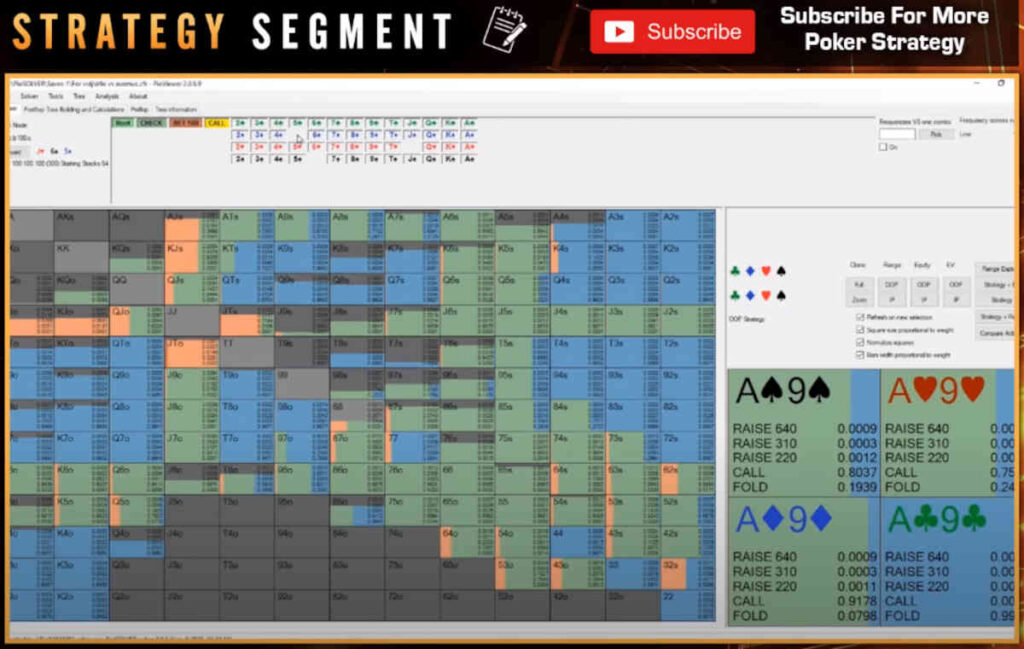
The opponent calls, and the river brings A♦, creating a rather tricky spot. In-game, I ended up checking back and giving up, losing to the opponent’s J8.
Looking at the solver, we’re bluffing this river spot with K♦ all the time, and with 9♦, it’s a mixed frequency.
One thing I’ll mention here is that you have to think about what hands you’re targeting on the river. When you pot the flop and bet 60% on the turn, even very good players will likely be overfolding in that scenario.
Most hands that were going to fold have folded already. So, there is a reason why you may be getting called often in these spots, even when you’re bluffing at a correct frequency.
Keeping Your C-bet Percentage in Check
In the final hand of this article, we’ll think about the button continuation bet frequency and how many players often get it wrong, c-betting too frequently on certain boards.
I open J♣9♦ on the button and get called by the small blind. The flop comes K♣10♣3♦, and the opponent checks.
In general, people tend to c-bet this spot insanely too much. If we look at the solver, we see that we have 71% checks. The bottom line is that you’re opening infinite on the button, something like 55% of the hands, and the opponent is only calling with about 15%.
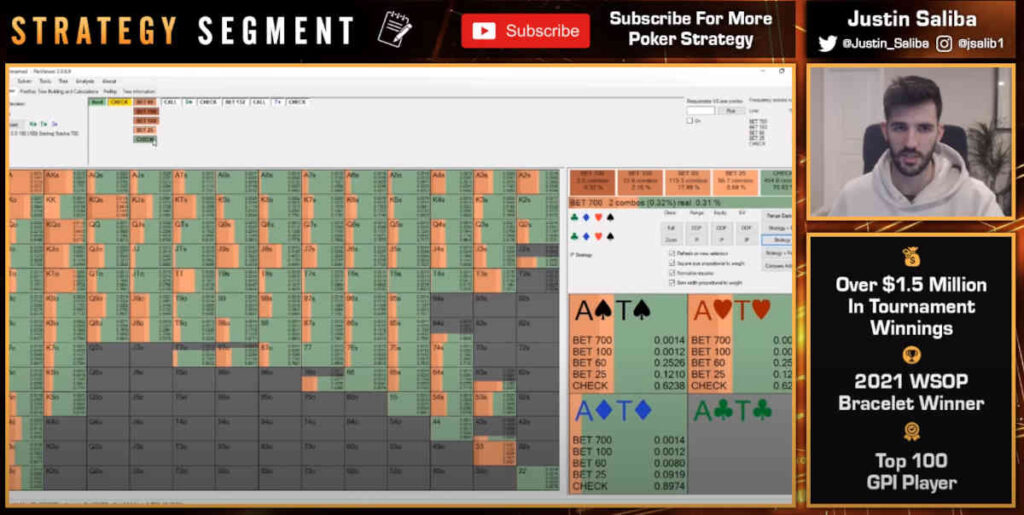
While you do have the top-hand advantage here, you also have far more air in your range than the opponent. Thus, you want to check back very often, and when you do bet, you’ll want to use medium to large sizing.
The small blind hand range in this spot is very tight, so if you start betting everything here, you’ll simply get run over by a good player.
In this hand, I opted for a mixed strategy, betting two-thirds pot; the opponent called, and we saw the 3♣ on the turn.
Once the opponent checks, we definitely have more flushes and more boats than the small blind player, so we get to bluff at a reasonable rate. I go with the bet of 60% and the opponent calls.
The river is 7♦, and here I made a mistake, moving all in, and the opponent called. Looking at the solver, we really don’t want to have the J♣ in this spot, and I definitely over-bluffed.
The opponent ended up tanking before calling with K♥10♦, so although this was an over-bluff, he still had a tough decision as we turn up with a lot of flushes and full houses on this river.
Hopefully, these three hands can help you with some wider concepts and situations that you encounter regularly in your games, and you’ll be able to apply these ideas on the felt!







